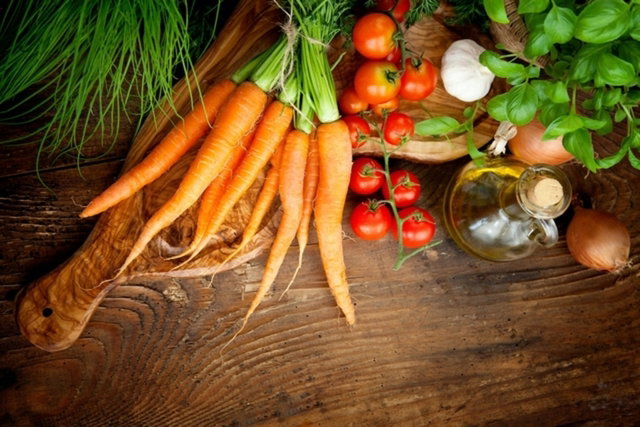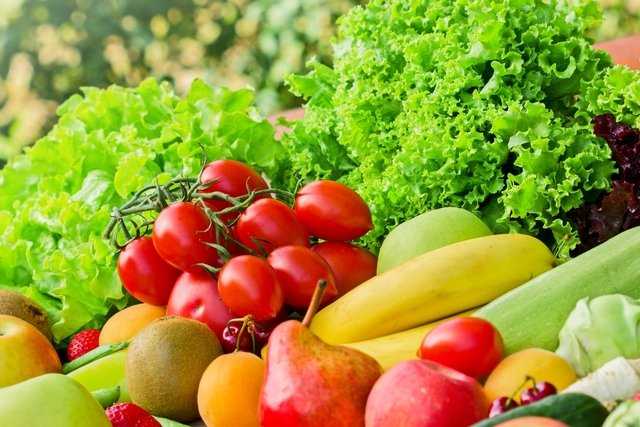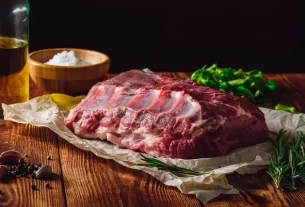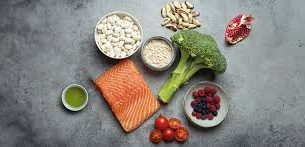The diet for cirrhosis must guarantee all the necessary nutrients to prevent nutritional deficiencies, and must include all types of fruits, vegetables, legumes, whole grains, fish and low-fat poultry meat, avoiding the consumption of red meat, fatty and processed foods , which are more difficult to digest and increase the amount of waste in the body, impairing their metabolism in the liver.
Liver cirrhosis is a disease in which the liver works with great difficulty, which can be caused by excessive alcohol consumption, viral hepatitis or other diseases. In these situations, adequate nutrition is essential, as these conditions are normally accompanied by severe weight loss, loss of muscle mass, fluid accumulation and deficiency of some nutrients, resulting in malnutrition, which can end up worsening the disease.
The damage to the liver caused by cirrhosis cannot be reversed only if a liver transplant is performed, however, if it is identified early and treated with medication and an appropriate diet, the progression of the disease can be delayed.

What should the diet be like?
The diet for liver cirrhosis must include complex carbohydrates, good fats, proteins of high biological value and it is important to ensure adequate nutrient intake. Therefore, it is important that the person eats 5 to 6 meals a day, in small portions, especially if they have little appetite or feel full very quickly, in addition to avoiding prolonged periods of fasting.
Furthermore, it is very important to add an evening meal, which must be rich in carbohydrates and proteins to avoid the loss of muscle mass, which is common in people with cirrhosis. This meal should contain proteins and complex carbohydrates, and may include a sandwich with cheese or yogurt with granola, for example.
It is also important to consume proteins of animal origin, such as eggs, dairy products, fish and poultry meat, and you can moderate your consumption a little and increase the amount of proteins of plant origin, such as tofu, soy or legumes, in addition to prebiotic foods. , as they produce fewer effects on the body and reduce the accumulation of toxic products. Learn more about prebiotics.
Your diet should also include all types of fruits and vegetables, because in addition to being a source of vitamins and minerals, they are rich in antioxidants that help detoxify the liver and prevent cellular damage caused by free radicals.
On the other hand, people with liver cirrhosis may have some vitamin and mineral deficiencies, or be underweight. Therefore, supplementation of these nutrients or a nutritional formula to increase calories consumed may be necessary, which should be recommended by a doctor or nutritionist.
Make an appointment with your nearest nutritionist for guidance on how to follow a diet for liver cirrhosis:
Taking care of your health has never been easier!
Allowed foods
The foods allowed in the diet for liver cirrhosis are:
- All types of fruits and vegetablesraw or cooked, with or without shell;
- Cerealspreferably whole grains, such as brown rice, oats, quinoa, barley, rye, whole grain bread and pasta;
- Plant-based proteinssuch as beans, soybeans, lentils and tofu;
- Proteins of animal originsuch as fish, eggs and white meats such as chicken and turkey;
- Milk and low-fat dairy productssuch as white cheese, ricotta, cottage cheese and yogurt;
- Plant-based drinks of rice, oats, hazelnuts or soy;
- Healthy fatssuch as olive, sunflower, soy or corn oil, avocado, chia, amaranth or pumpkin seeds, and nuts;
- Spicessuch as saffron, cinnamon, cumin, bay leaf, mustard leaves, nutmeg, parsley, coriander, garlic, oregano, turmeric, mint, basil, rosemary and thyme.
Food should be prepared in the oven, grilled or boiled, avoiding frying.
It is important that the professional draws up an individualized nutritional plan, which must ensure that the person ingests the right calories and proteins for their body. Furthermore, in these cases, moderate physical activity is also recommended to prevent the loss of muscle mass.
Foods that should be avoided
Foods that should be avoided to help control cirrhosis are:
- Alcoholic beveragesregardless of whether they are responsible for cirrhosis;
- Red meatsuch as beef and offal;
- Sausagessuch as sausages, chorizo and salami;
- Whole milk and high-fat dairy products, such as whole milk, butter, cream and yellow cheese, such as cheddar, brie, camembert, feta, parmesan, among others;
- Fatty and processed foodssuch as French fries, snacks, ready-made sauces, instant noodles, frozen food and ready-to-eat meals;
- Sweet foodssuch as cakes, cookies, cupcakes, sandwich cookies, soft drinks and processed juices.
It is important to keep in mind that some people with liver cirrhosis may have intolerance to some foods or experience pain after consuming them, especially those that contain gas, such as broccoli, cauliflower or cabbage, and dairy products, for example, being important avoid them in these cases.
Menu of a diet for cirrhosis
The following table provides the option of a 3-day menu for a person with liver cirrhosis:
The quantities included in the diet and the amount of liquids to be consumed vary according to the severity of the disease, age and gender. Therefore, the ideal is to seek out a nutritionist so that a complete assessment can be carried out and a nutritional plan tailored to your needs can be created. Furthermore, it is also important to remember that medications should only be consumed under the guidance of a doctor.
Prolonged fasting in people with liver cirrhosis favors a decrease in muscle mass and weight loss, and it is important to eat every 3 to 4 hours.
How to control fluid retention
To control the fluid retention that normally occurs in cirrhosis and which is called ascites, you should reduce your salt intake, avoiding adding it to meals and consuming foods that contain it in large quantities, such as sausages, salami, cubes meat, ready-to-eat foods, fast food, Worcestershire sauce, soy sauce and canned goods.
As an alternative, preference should be given to using natural herbs to season food, such as garlic, onion, pepper, parsley, basil, coriander, oregano, among others. Furthermore, it is recommended to consult a nutritionist to find out whether or not you should control your fluid intake, as depending on the degree of ascites it may be necessary.
Nutrition for advanced liver cirrhosis
When liver cirrhosis is at a more advanced stage, the diet must normally be carried out in the hospital, as it is necessary to compensate for the nutritional deficit and control metabolic changes, which is done through the analysis of regular blood samples that allow assess the person’s health status.
People with advanced liver cirrhosis typically have deficiencies in minerals such as potassium, magnesium and phosphorus, as well as B vitamins, especially when the cirrhosis is of alcoholic origin. In cases of steatorrhea, which correspond to liquid and fatty bowel movements, deficiencies of fat-soluble vitamins (A, D, E and K) may also be noted. In addition, they may also present sodium retention, loss of muscle mass and hypoalbuminemia.
Therefore, if the person tolerates the oral route, the diet must be healthy and balanced, high in calories and proteins, and must be supplemented with vitamins and minerals. In cases where the oral route is not tolerated, the diet should be administered through nutritional formulas through a nasogastric or nasoenteric tube or intravenously, allowing the nutritionist to better control the nutrients and the amount of liquids they receive, avoiding overload of the liver and improving the person’s prognosis and nutritional status.
These nutritional formulas are generally high in branched-chain amino acids (BCAA) and low in aromatic amino acids (AA). BCAAs apparently prevent the entry of toxic substances into the brain, reducing the risk and worsening of hepatic encephalopathy, preventing the degradation of muscle mass and can be used as a source of energy by the muscle, brain, heart and liver when the body cannot use glucose. or fat to generate energy.
Find out what the treatment for liver cirrhosis should be like.

Sign up for our newsletter and stay up to date with exclusive news
that can transform your routine!
Warning: Undefined array key "title" in /home/storelat/public_html/wp-content/plugins/link-whisper-premium/templates/frontend/related-posts.php on line 12
Warning: Undefined array key "title_tag" in /home/storelat/public_html/wp-content/plugins/link-whisper-premium/templates/frontend/related-posts.php on line 13




